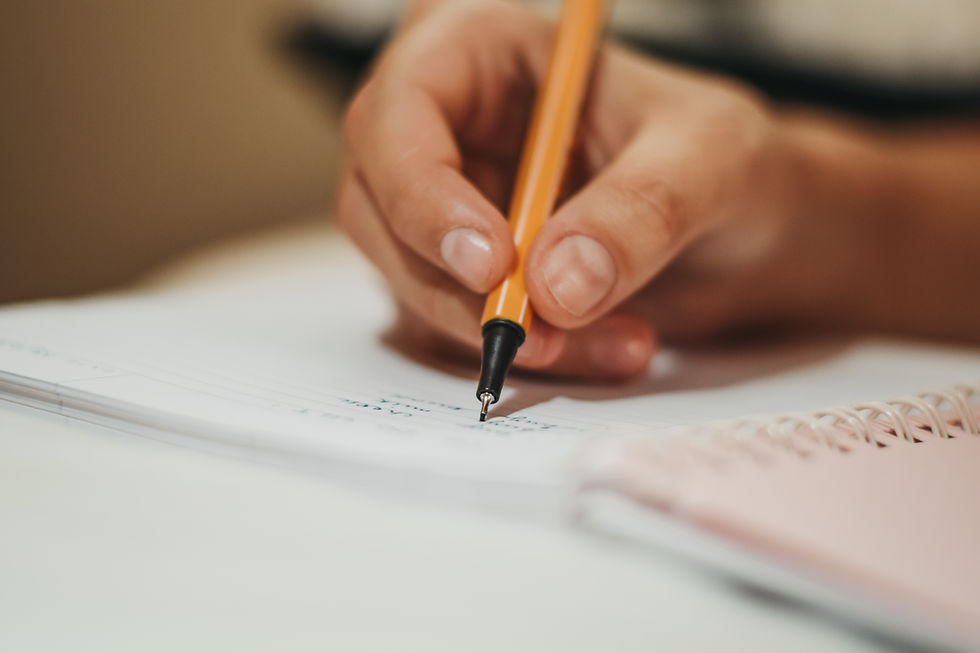Typing vs Writing | What’s Better For Learning?
- Jordan Allan

- Jul 20, 2022
- 2 min read
Updated: Jan 14, 2023
Everyone knows about the different learning styles different students prefer, but which is better suited for the learning environment: typing or handwriting? Let’s discuss:
Learning Styles
When it comes to learning styles, handwriting is a winner, hands-down. Writing by hand incorporates the brain power of imagining, visualizing, and then the muscle power of drawing each character. This provides muscle memory when it comes to studying later on. Tying does offer visual and auditory feedback and utilizes quick thinking, but may lead to more brain dumping and less memorization with its efficiency.

Injury
While keyboards can lead to carpal tunnel later in life, taking breaks is just as important as taking breaks from writing on paper. Everyone has experienced a pencil cramp or two as a child… but have you experienced one as an adult? Ouch. Leaning over a keyboard for long periods of time is also known for leading to poor posture, but hunching over a classroom desk for long periods of time can have a similar effect.
Productivity
When it comes to remote learning, keeping up with the class is way harder, thus assignment due dates feel like they come and go faster. Online learning can utilize keyboards way more, but some feel they are impacting student learning compared to scanning written work.

Research:
In a recent study published in Frontiers in Psychology, a research team led by Eva Ose Askvik at the Norwegian University of Science and Technology took a close look at optimal learning within a classroom setting, and specifically at the effectiveness of handwriting vs. typing notes:
This isn’t the first study to examine the effectiveness of handwriting vs. typing notes. Previous studies have made clear how the human brains learns — drawing letters and taking notes longhand is more effective than typing them out, according to an earlier Frontiers in Psychology report. But the study by Askvik’s group looks at whether taking notes using a pen uses more of the brain than typing notes out, specifically in 12-year-old children. The implication is that if more of the brain is used, learning is more effective.
According to Science News for Students, taking notes longhand is more involved because it involves thinking about and producing the shape of each individual letter, retrieving memories of what the letters look like, controlling our hands when writing and watching the shape of each letter take form. When you type things out, you’re simply hitting keys on a keyboard. Your brain isn’t forced to engage in the same way. For the most effective learning and remembering, it was better for students to write or draw by hand versus typing out notes. The researchers deduced this because writing and drawing activated areas of the brain that typing did not. And it’s important to note that both adult and kid brains delivered similar results.
That’s not to say that typing is not important in the tools for teaching and learning. When it comes to learning and studying however, it may be key to keep materials on paper. While technology is encouraged in learning to open the door to a multitude of resources, handwriting is still the key to locking in new material.
Do you remember your first typing class?

Visit our website and let us know!!



Comments